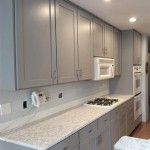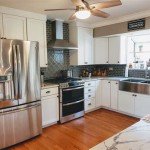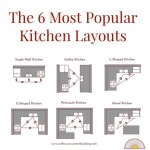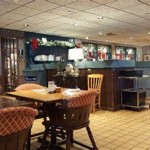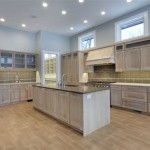Essential Aspects of Small Commercial Kitchen Layout Examples
Designing a small commercial kitchen requires careful planning to ensure efficient workflow and optimal space utilization. Every inch of the kitchen should be utilized wisely to accommodate essential equipment, storage, and work areas. Here are some key considerations for creating a functional and well-organized small commercial kitchen layout.
Work Triangle
The work triangle connects the three most important areas in a kitchen: the stove, sink, and refrigerator. These three elements should be arranged in a triangular pattern to facilitate efficient movement and minimize unnecessary steps. The distance between each element should be approximately 4-6 feet to ensure easy access and usability.
Equipment Placement
The placement of equipment should be based on the workflow of the kitchen. High-use equipment, such as the stove and oven, should be placed in easily accessible areas near the work triangle. Less frequently used equipment, such as the freezer, can be tucked away in a corner or against a wall. Wall-mounted shelves and racks can be used to store small appliances and frequently used items, freeing up valuable counter space.
Storage
Adequate storage is crucial in a small commercial kitchen. Utilize vertical space by installing shelves and racks. Overhead storage can be used to store bulky items, while under-counter storage can be used to store pots, pans, and other cookware. Consider using drawers instead of cabinets for easy access to items.
Work Surfaces
Countertops should be made of durable materials such as stainless steel or quartz that can withstand heavy use. The height of the countertops should be comfortable for the staff to work at. Provide ample counter space for food preparation, plating, and storage. Consider adding a prep sink to increase efficiency.
Lighting
Proper lighting is essential for a safe and efficient kitchen. Natural light should be maximized by incorporating windows or skylights. Task lighting should be installed over work surfaces and cooking areas to provide adequate illumination. Consider using dimmers to adjust the lighting intensity as needed.
Ventilation
Proper ventilation is crucial to remove cooking odors, heat, and grease. Install a powerful exhaust hood over the stove and oven to evacuate fumes and maintain a comfortable working environment. Ensure the ventilation system is regularly cleaned and maintained to maintain its efficiency.
Safety
Safety should be a top priority in any kitchen. Keep walkways clear and uncluttered. Install non-slip flooring to prevent accidents. Provide fire extinguishers and first aid kits in easily accessible locations. Train staff on proper food handling and safety procedures.

6 Commercial Kitchen Layout Examples Ideas For Restaurants

Small Kitchen Design For Commercial Kitchens Tag

Commercial Kitchen Layout Ideas To Optimize Space

How To Choose The Right Commercial Kitchen Layout Lightsd

Small Kitchen Design For Commercial Kitchens Tag

Small Kitchen Design For Commercial Kitchens Tag

The Complete Guide To Commercial Kitchen Design Ovvi

6 Commercial Kitchen Layout Examples Ideas For Restaurants

4 Reasons Your Commercial Kitchen Layout Matters

4 Reasons Your Commercial Kitchen Layout Matters
Related Posts


